Search engine optimization (SEO) is the practice of continuously improving online content to provide a better user experience and earn better rankings on the results pages of Google, Bing, and other search engines.
All kinds of content can benefit from SEO, including the articles in your product knowledge base.
How so?
Well, improved SEO results will help you provide your users with content they really need and help them find what they are looking for, increasing customer happiness.
And since your product documentation is much more present and visible online, you can also expect a healthy boost in your sales efforts.
Does that sound good?
Well then, here are six practical tips for boosting your SEO results and optimizing your product knowledge base.
Discover What Your Customers Search For
Search engine optimization (SEO) is all about connecting internet users with the exact content they are trying to find. Product knowledge bases are no different.
But in order to provide what they need, you first need to find out what search engine users are looking for in your knowledge base.
A simple way to do that is to use SEO tools. Specifically, the tool that can tell you which terms your users are searching for is called a Keyword Generator.
The good news is these tools are rather easy to use, and many of them even come free of charge.
For example, Ahrefs offers a great keyword generator that will give you all the information you need.
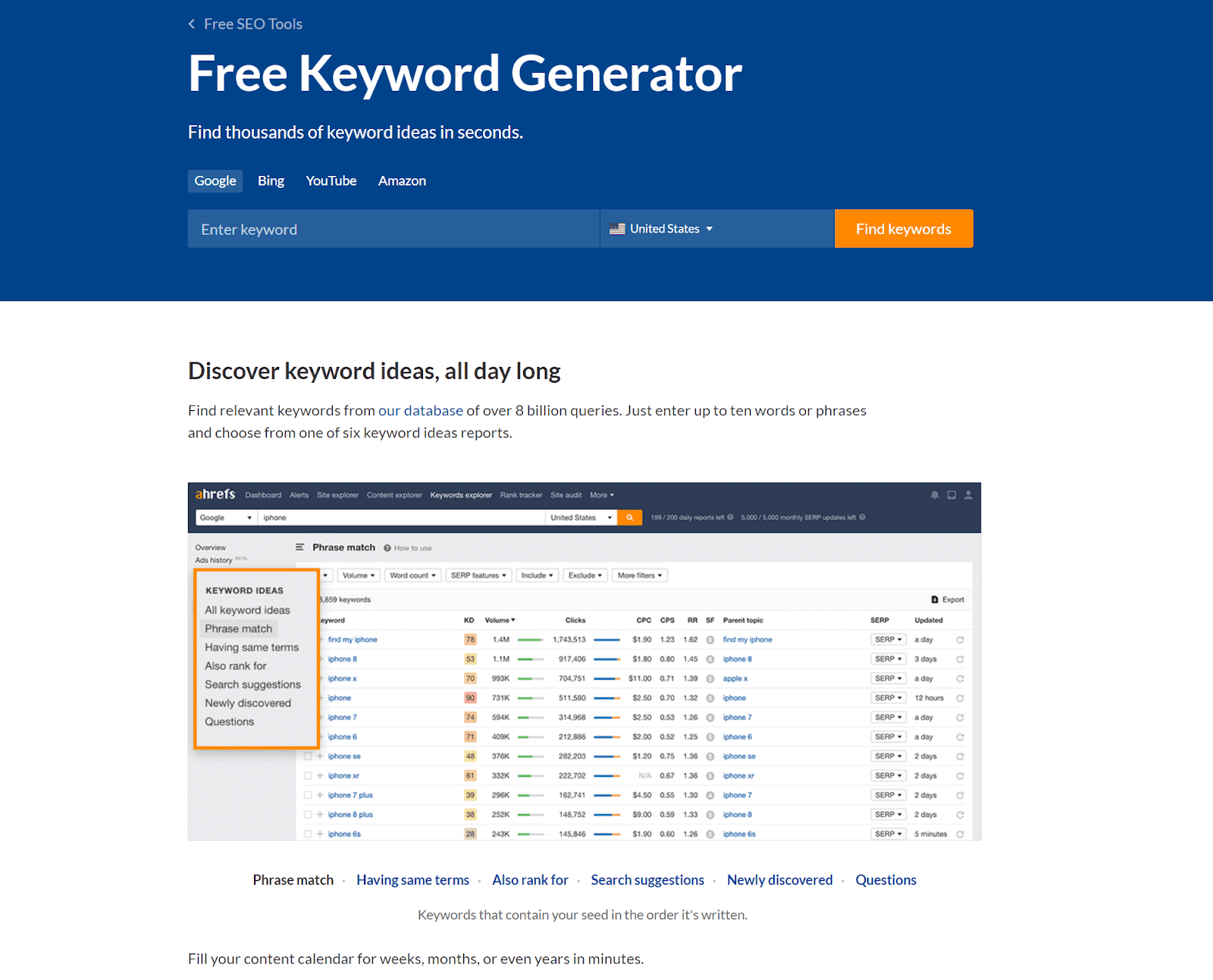
Source: Ahrefs
A keyword generator will tell you which keywords users are searching for on Google or Bing, with the purpose of showing you what kind of content you should be creating to satisfy their needs and optimize your site for search engines.
Therefore, all you need to do is enter your company or product name and hit “search” to see which keywords users are looking for alongside your brand.
And since you want to find results relevant to your knowledge base, we recommend adding a keyword that reflects its educational and instructive nature.
For instance, you can add the keywords “how to” to your query.
Let’s look at a real-life example.
Say we wanted to see what types of knowledge articles users of Hubspot are looking up on Google. Our keyword generator inquiry might look something like this:
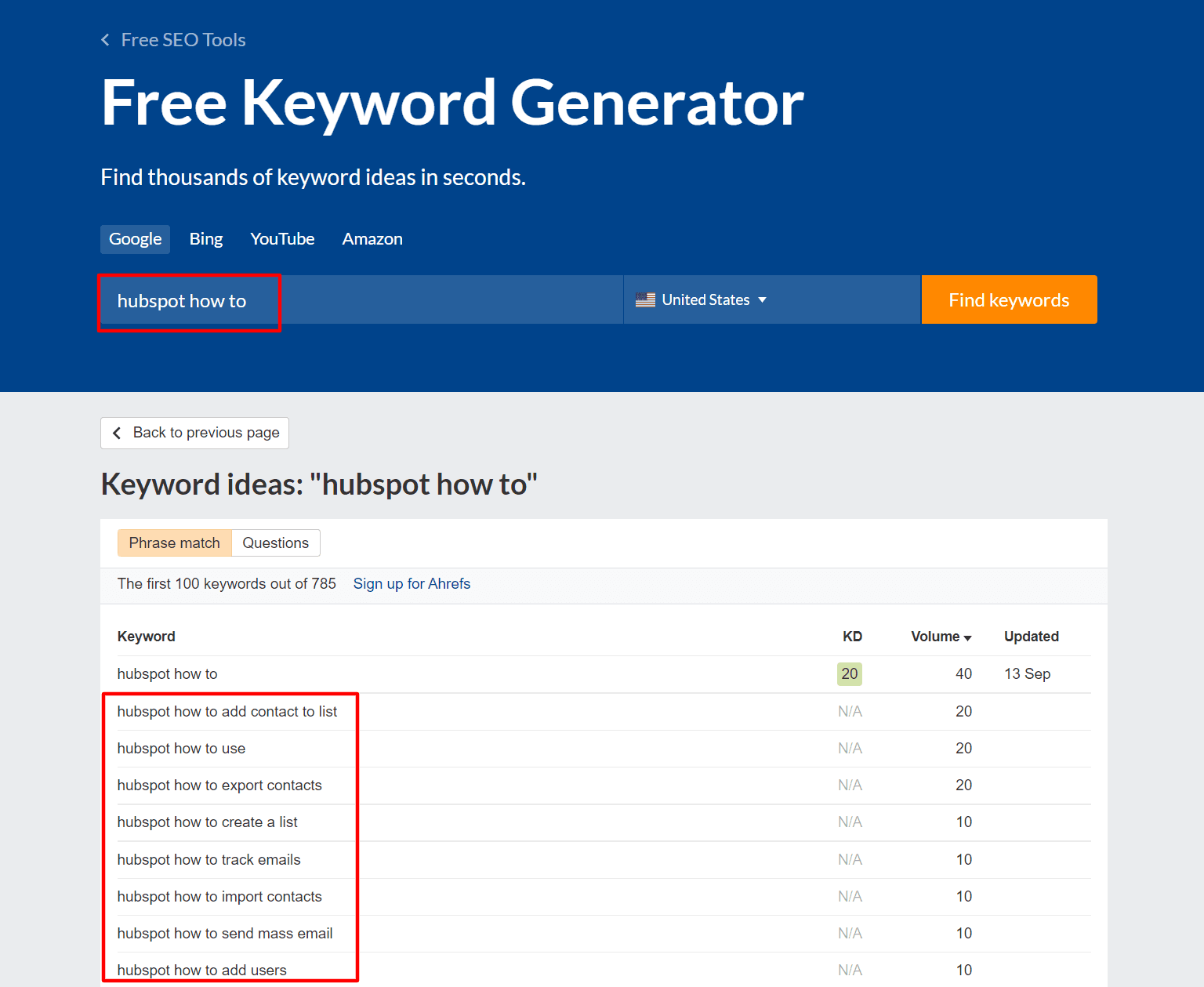
Source: Ahrefs
From the results, we can see that users want to know things like “how to add a contact to a list” or “how to track emails.”
Clearly, these are the questions Hubspot’s users struggle with, so our next move should be to check if we have the answers to these questions in our knowledge base.
In Hubspot’s case, these questions really are answered in the product knowledge base.
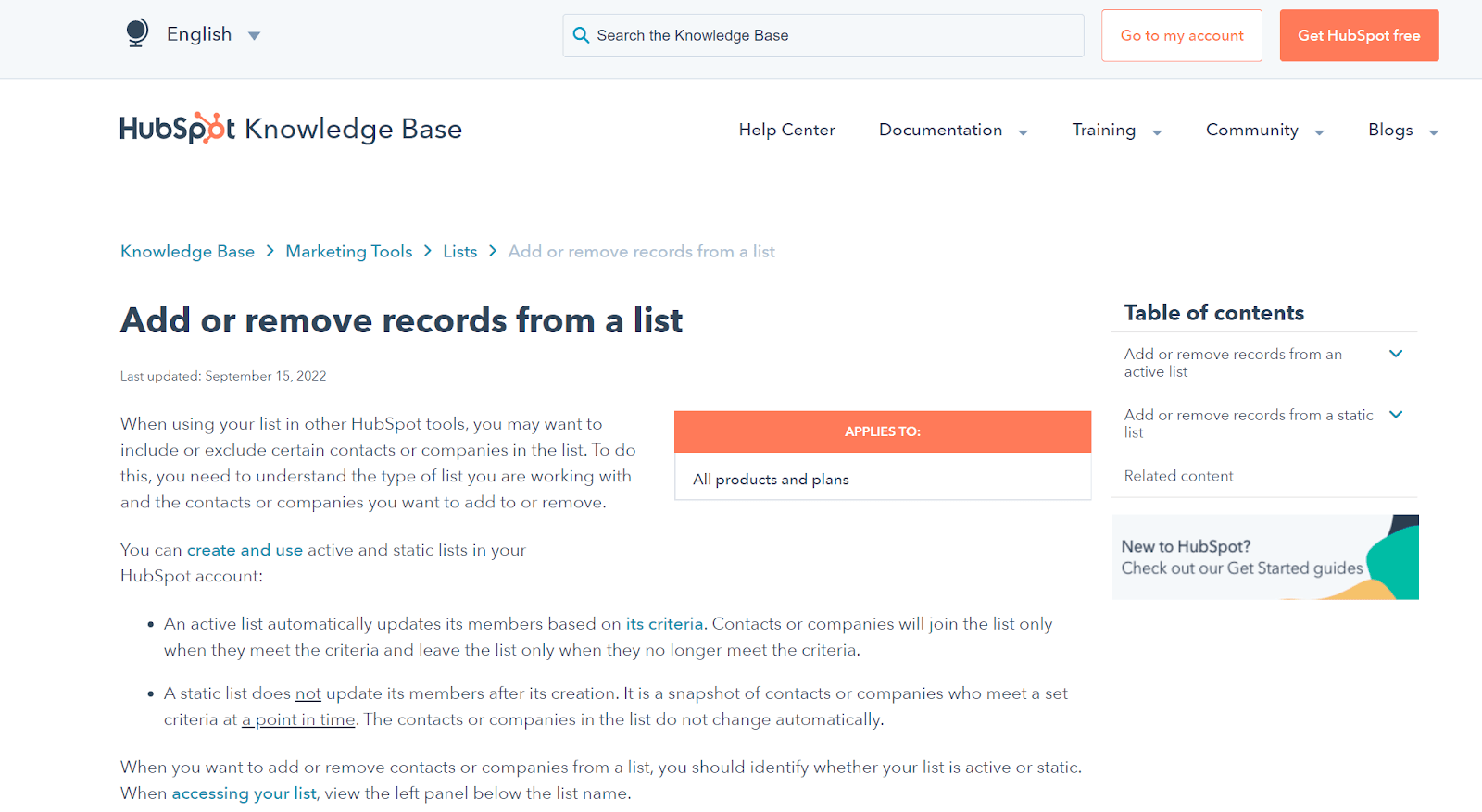
Source: Hubspot
If there are user inquiries like these that aren’t answered in your knowledge base, then that points to gaps in your documentation that need to be filled in order to better serve your users.
The point of all of this is to ensure you’re hitting the mark on providing the content your users are looking for.
If you can provide answers to the questions that interest your user base, you can expect better SEO results because search engines will recognize that you offer quality content to those who need it.
Optimize Your Article Titles
When looking at the results page of a search engine, such as Google, what’s the first thing you see? We bet it’s the title.
The titles of the articles in your product knowledge base are arguably the most important element of that document.
And that goes both for the search engines and the users accessing your knowledge base.

Source: Google
Search engines use titles to generate clues on what the article is about and figure out which users would be interested in reading it based on the contents of their search.
Similarly, internet users read the title of your article to decide if the article contains exactly the information they came to your knowledge base to find.
Considering how important titles are, it’s no wonder optimizing them plays a big role in SEO. So here are a couple of tips on improving your titles for both machines and humans.
The first thing to know is that wordy titles just don’t do the trick because the longer a title is, the more difficult it becomes to understand.
Instead, try to aim for short, impactful, and clear titles that are unlikely to be misunderstood.
Here’s an example of what not to do:

Source: PR Newswire
Just like our eyes, search engine algorithms don’t know what to latch on to here, which makes it hard for them to figure out what kind of inquiry this article actually answers.
Instead, try for something short and sweet like this:
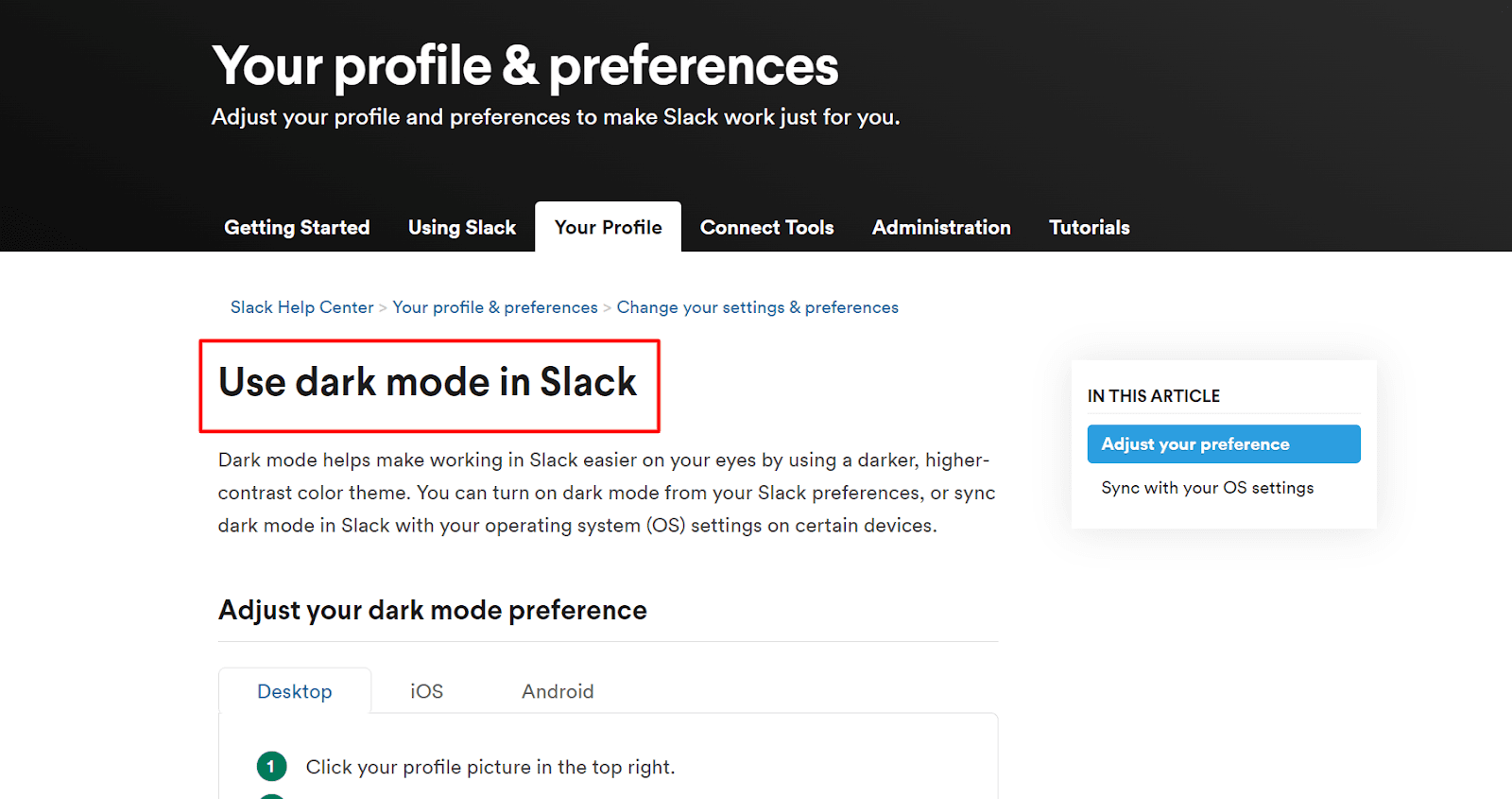
Source: Slack
There’s another good practice we can find here as well.
The keyword of the article (“dark mode”) is present and easily discernible in the title, along with the name of the product (Slack).
The primary keyword provides a clear indication of what the article will be about, so it’s very important to include it in the title.
And since many software products and apps have a dark mode, including the brand name in the title will help search engines connect users of your product to the correct article in your knowledge base, and not another service provider.
So when a user googles this keyword along with their inquiry, they’re very likely to get this article very high up on the search engine results page (SERP).
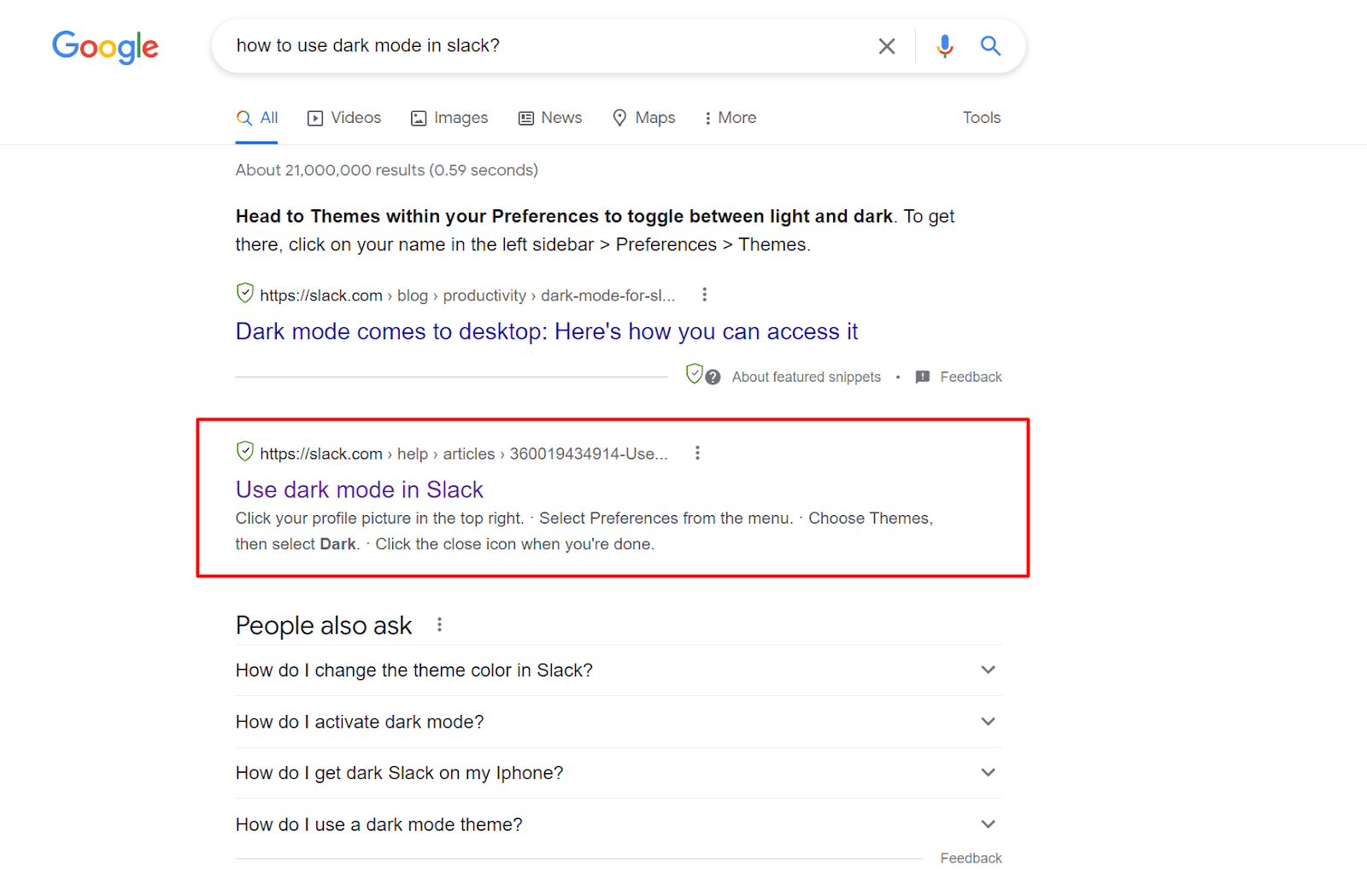
Source: Google
Remember: the secret to optimized titles that both search engine algorithms and human beings will easily understand is brevity and clarity, with the keyword of the article present in the title.
Format Your Content for Readability
While we’re on the subject of making your content easily understood, another big part of SEO is formatting content for readability.
Search engine algorithms favor content that provides a good user experience and is enjoyable to consume.
So let’s talk about what you can do to make articles in your knowledge base more readable.
Firstly, definitely steer clear of big chunks of text. This kind of writing can be quite exhausting for the reader and make them become distracted or completely lose interest in the article.
Have a look at the example to understand what we mean.
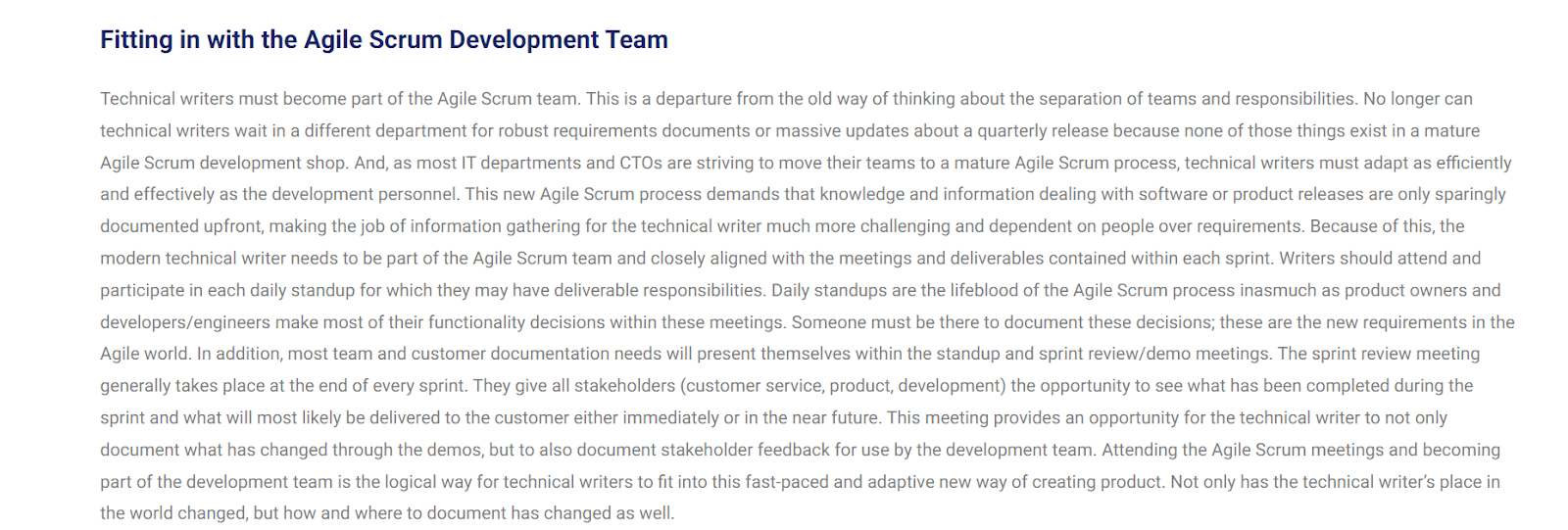
Source: Writing Assist
A much better way to format the article is to break it up as much as possible so that your reader has natural places to pause, rest, and think about what they’ve read.
On the level of the whole article, this means dividing the content into subsections with clear titles for each one:
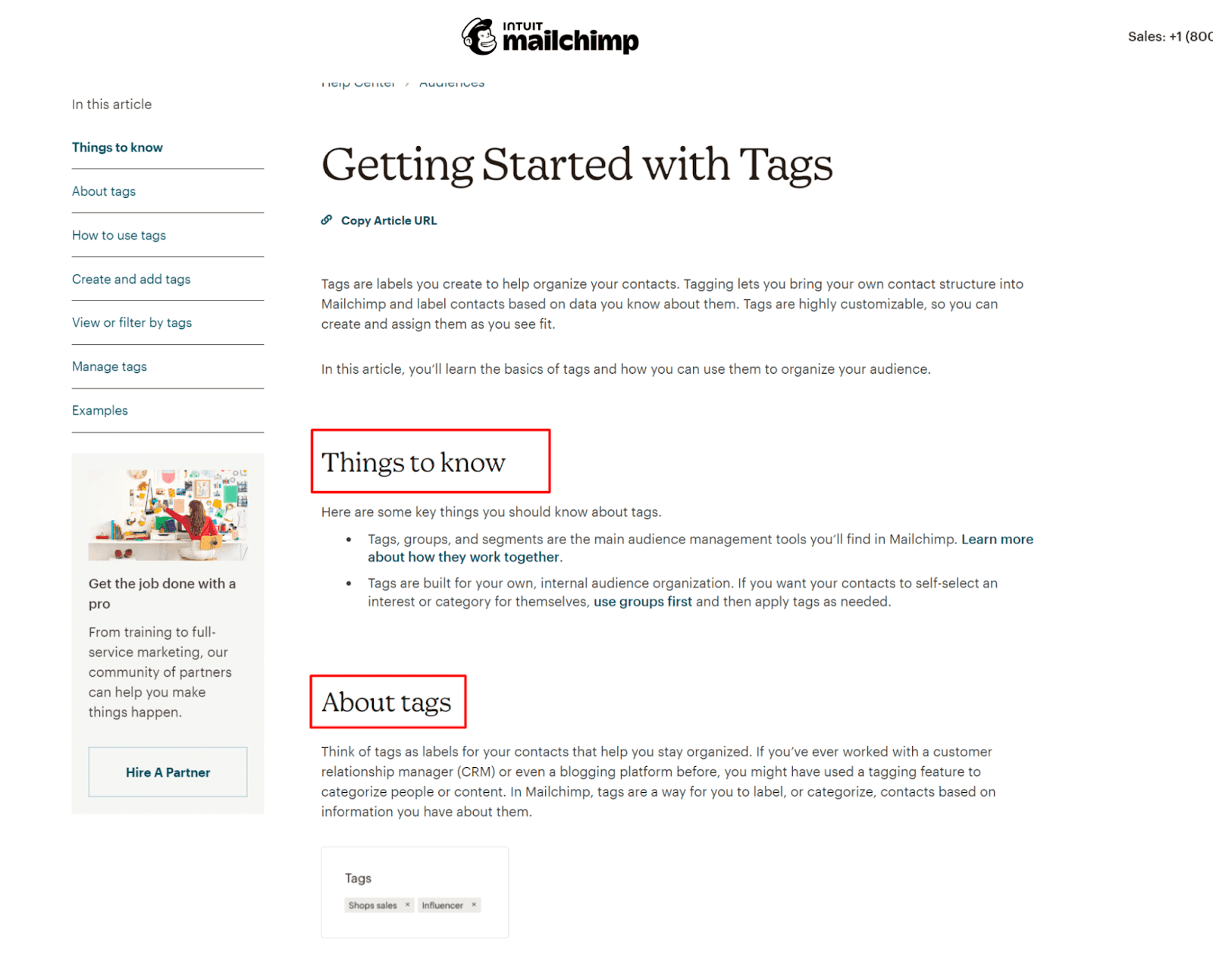
Source: Mailchimp
You can go even further by breaking the text up into short paragraphs and introducing bullet points and bolded text to amplify your points and highlight what’s important.
You can see examples for each of these techniques in the screenshot from Mailchimp above.
Finally, consider adding materials other than text into the article to keep the reader engaged. These materials can include anything from pictures and videos to diagrams and code examples.
If your product knowledge base was built using modern documentation software, such as Archbee, this should be an easy enough task.
Archbee has more than thirty custom blocks you can use to express yourself any way you’d like and keep the reader glued to the page.

Source: Archbee
This should also help you provide instructions and explanations for your users that are much easier to understand and follow than just plain text.
And that’s it! With a little tweaking to the format of your articles, you’ve provided a much better user experience for your users, which will definitely be recognized by search engines and rewarded with better rankings on the results page.
Format Your Content for Mobile
Today’s internet users frequently access online content using their mobile devices. In fact, in 2022, the majority of global web traffic is coming from mobile users, not desktops.
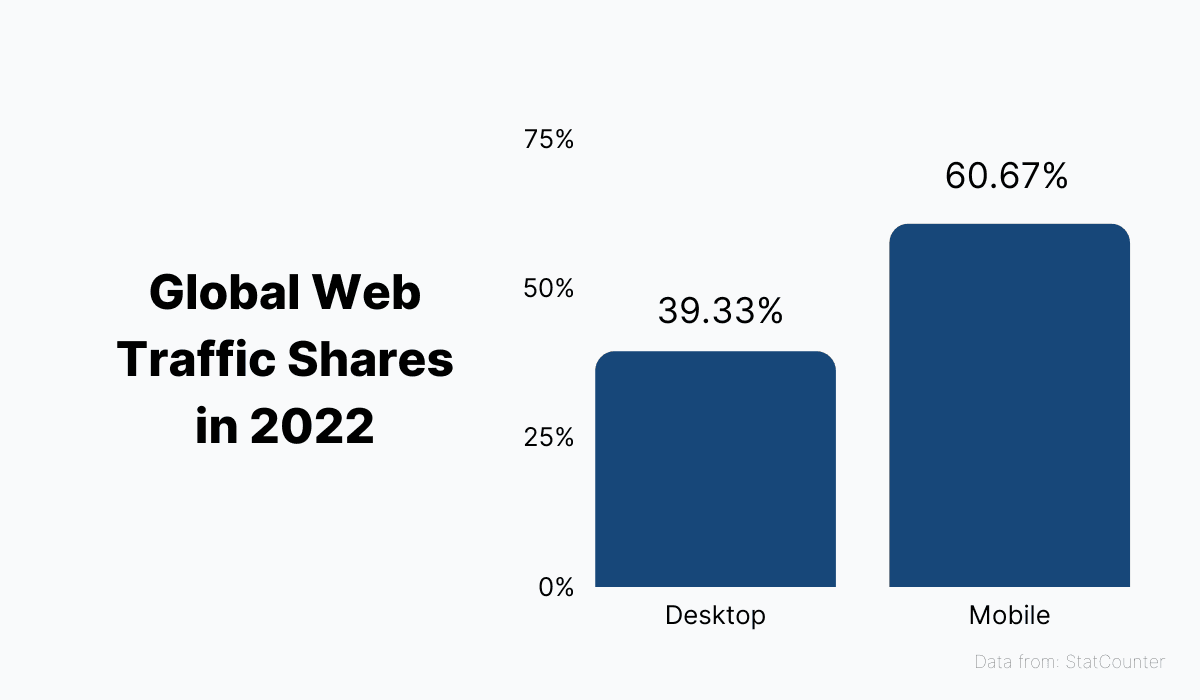
Source: Archbee
Therefore, if you’re not making your product knowledge base content responsive (adapting it for mobile users), you might be missing out on a lot of traffic.
Google is aware of this situation and has been for quite some time.
All the way back in 2015, they rolled out an algorithm update to start prioritizing mobile users since trends were pointing to a significant increase in mobile device traffic.
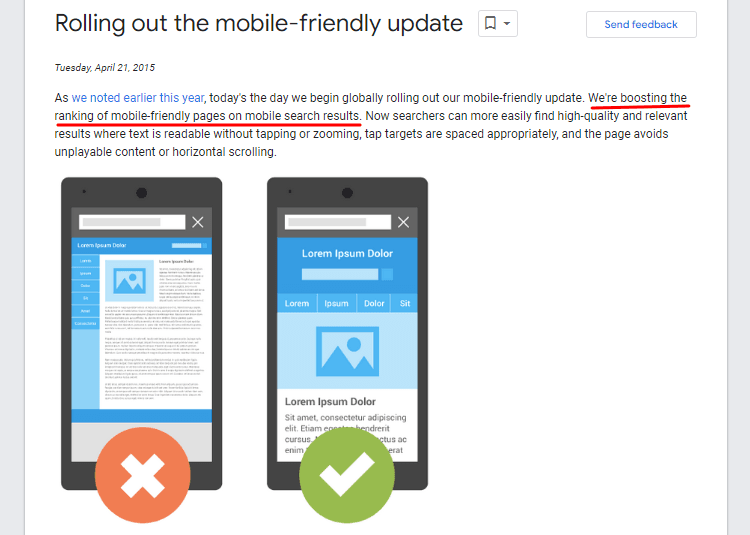
Source: developers.google
From that point on, websites that weren’t optimized for mobile became very unlikely to be featured on the search engine results page for mobile users, no matter the quality of their content.
So, the question is: is your product knowledge base optimized for mobile?
If you’re not sure, there are ways to find out.
One of the quicker ones is to run your website through Google’s own mobile friendliness test:

Source: search.google
Just enter your domain and run the test. If your website is responsive, you should get a result that looks like this:
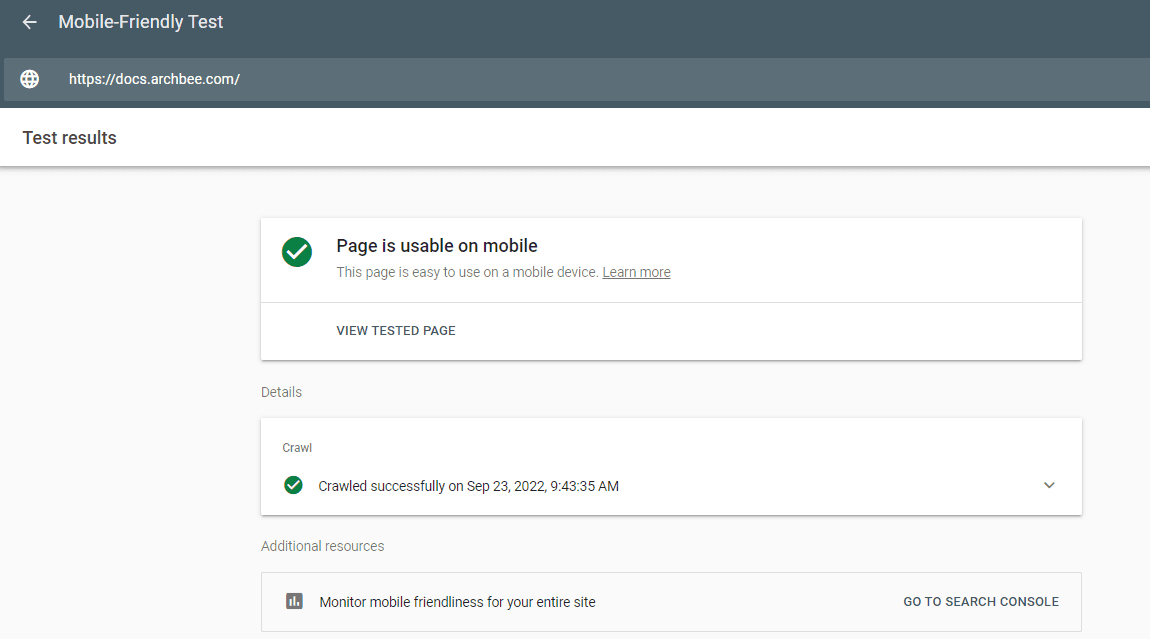
Source: search.google
If not, you could be in need of better software to host your product knowledge base.
Quality documentation software will enable you to build a knowledge base that automatically adapts to mobile users, making the content more accessible and easier to explore.
For example, here’s Archbee’s own product knowledge base as it displays for desktop users:
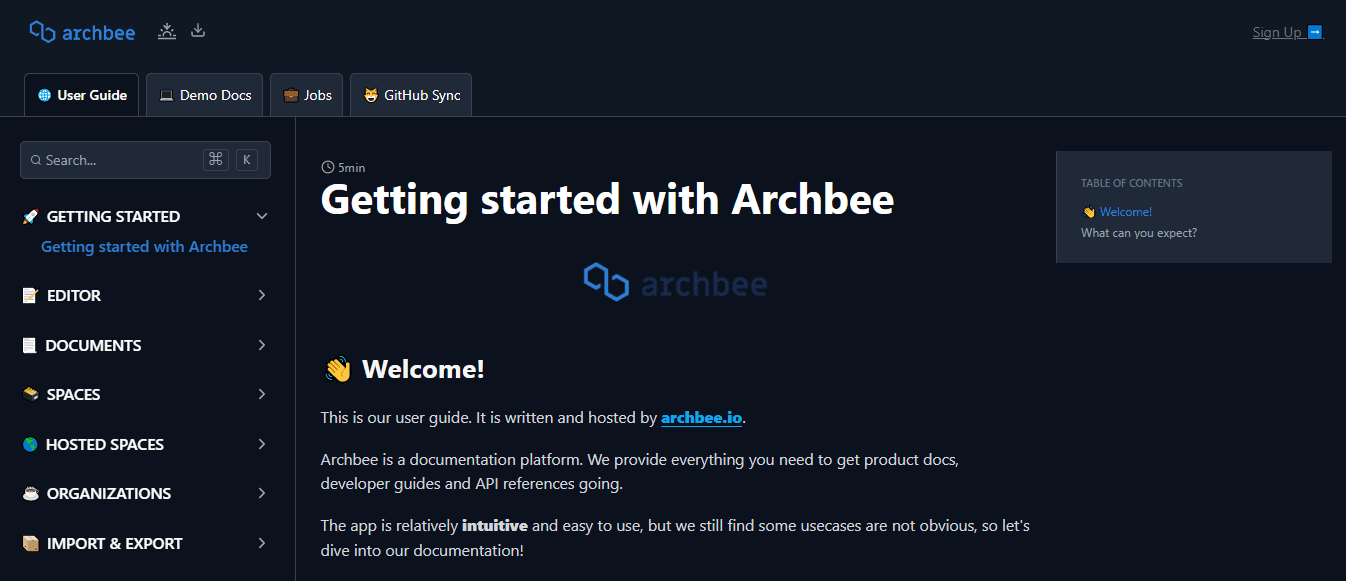
Source: docs.archbee
And here it is optimized for mobile users:
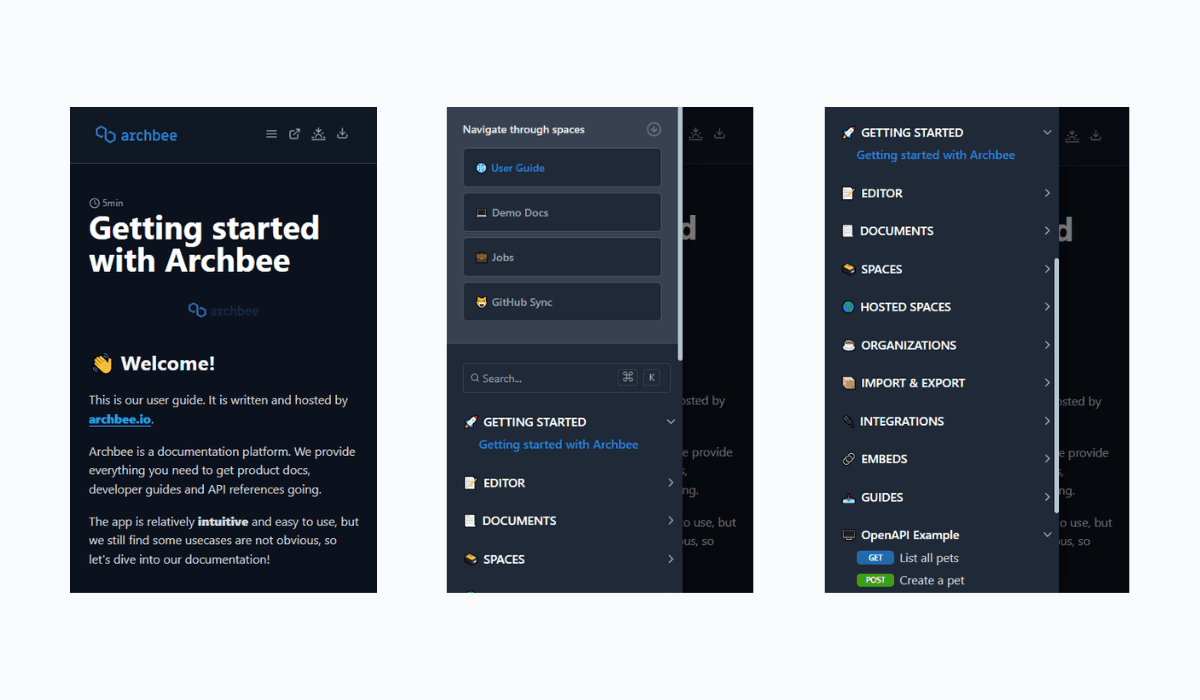
Source: docs.archbee
Long story short, try not to lose sight of the fact that a lot (if not most) of the traffic to your content will come from mobile users.
If you really want to see some SEO results, you’ll need to adopt a mobile-first mindset and optimize your knowledge base for mobile users.
Build Your Internal Links
The best product knowledge bases have articles riddled with hyperlinks that lead to other articles within the base. This is no accident.
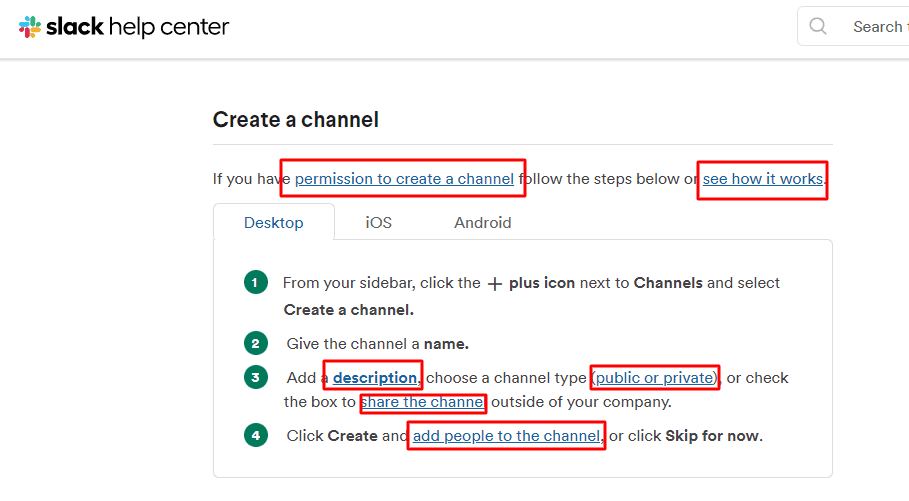
Source: Slack
Interlinking structures within your knowledge base are vitally important to both your users and search engines. Let’s see why.
In purely technical SEO terms, internal links help Google’s bots crawl your knowledge base and index every page within it.
You can imagine these bots as spiders that arrive at your article and analyze it so that they can offer that specific page on the results page as an answer to a user’s inquiry.
This process is called indexing.
If the bots come across a link on the page, they’re going to follow it like a spider traveling on a thread of their web.
Once they arrive at the destination page, they’re going to index that one as well and follow other links to other pages until the entire base is indexed.
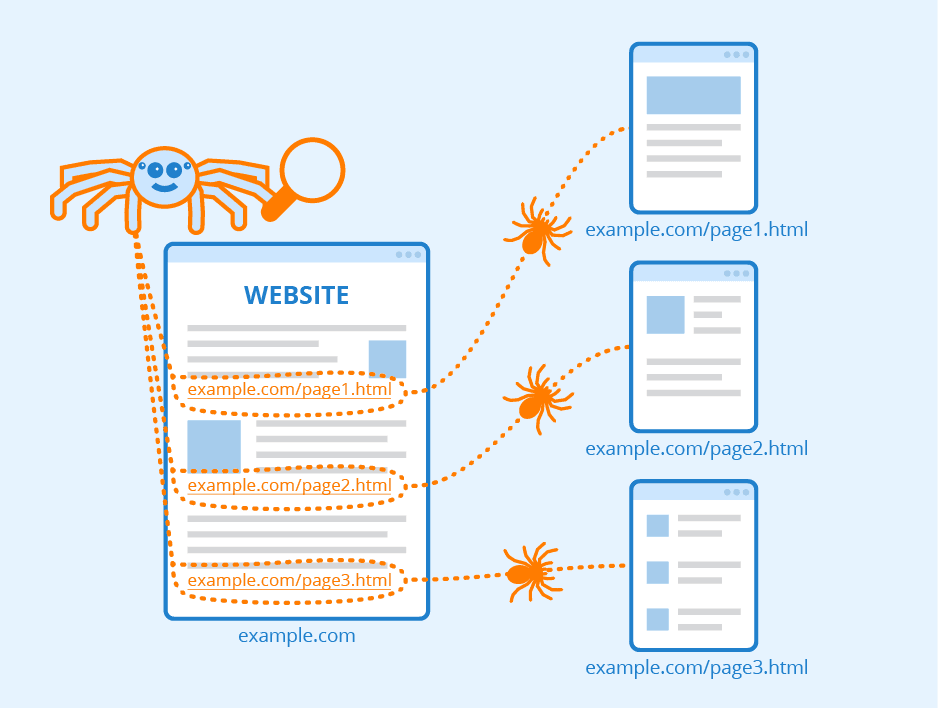
Source: Seobility
That’s why internal links are good for SEO. They help your knowledge base get indexed, meaning its articles are going to be better represented on the results page.
But, more importantly, internal links help your visitors navigate your knowledge base and facilitate a more manageable and methodical approach to learning about your product.
It’s easy to see how.
For one, instead of writing long articles users never manage to finish, you can splinter your content into multiple articles and interlink them.
Have another look at our example from Slack above. The article starts with a condition: “If you have permission to create a channel follow the steps below or see how it works.”
Instead of having to explain how permissions work right then and there, the article simply links to a different article that handles that topic.
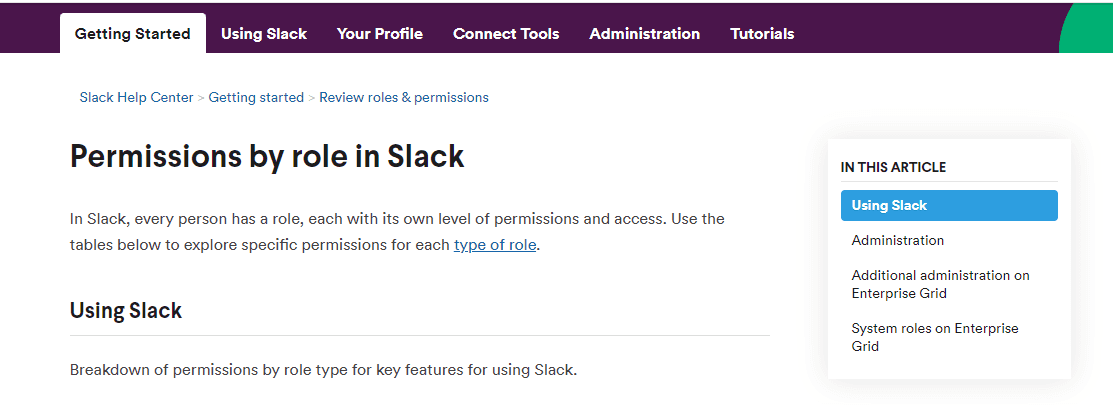
Source: Slack
You’ll agree that that’s a much more user-friendly way to convey instructions than going over everything in just one article.
Also, if your article uses internal links, users have a much easier way to instantly get answers to anything they might be wondering about.
For instance, if a user reading the above article about permissions isn’t sure what the roles in the structure of a Slack account are, they can simply click on the link to instantly find out, instead of having to go to the search bar and enter a query.
To sum up, internal links turn your knowledge base into a network of articles that’s easy to navigate, a structure in which every answer is at the tips of a user’s fingers.
And what’s good for users is good for SEO, so definitely take advantage of internal linking.
Increase Your Loading Speed
Since SEO is concerned with providing an excellent user experience, it would be good to know which aspects of your product knowledge base are keeping you from achieving it.
And the number one culprit in that regard is loading speed.
It turns out that people absolutely detest slow-loading websites. More than half of them even say they abandon a site if it takes more than three seconds to load.
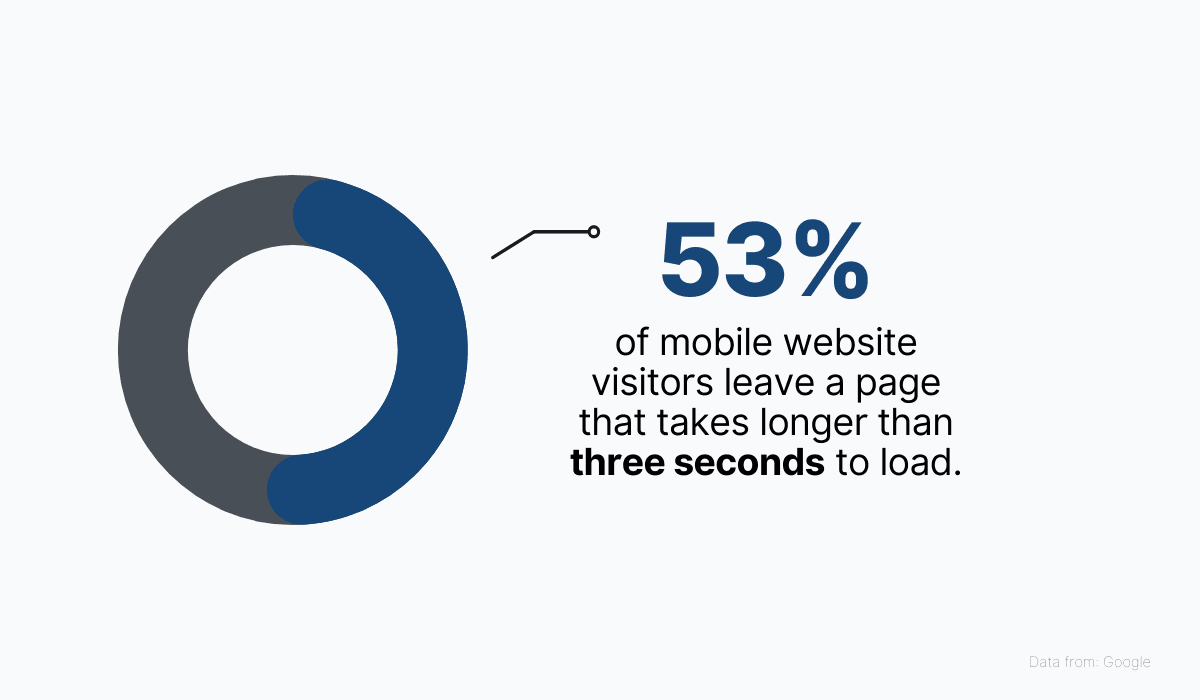
Source: Archbee
When you consider that it takes as long as 22 seconds on average to load a landing page on mobile, getting load times in under three seconds seems like an unattainable goal.
And since users are repelled by slow loading speeds, Google’s search engines actually penalize sites that take too long to load by giving them lower rankings.
However, there are things you can do to keep those numbers low.
The thing about loading speed is that it depends on the heaviness of your page. The more information that needs to be loaded, the slower the loading speed will be.
Therefore, a good place to start is to see if you can make on-page elements as light as possible.
For instance, you can try to compress large images using a service such as TinyPNG, which can reduce the size of images by as much as 70%.
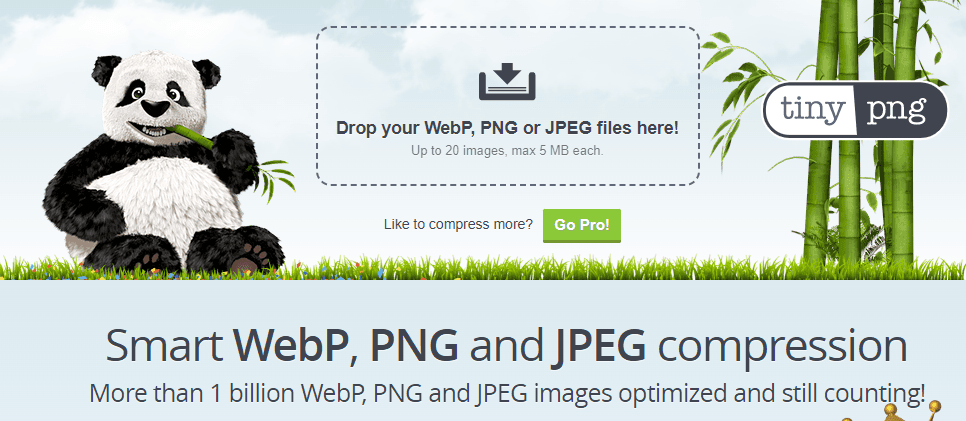
Source: TinyPNG
Another element that impacts loading speed is how your content is hosted.
Different web hosting providers will offer different loading speeds, depending on their capabilities and the plan you choose.
For instance, Archbee’s clients are offered a custom domain (docs.yourdomain.com) that’s hosted by Archbee through AWS's CloudFront content delivery network, one of the fastest, safest, and most reliable hosting services available.

Source: aws.amazon
By keeping the pages in your knowledge base light and fast, you’re removing one of the biggest reasons why your articles aren’t doing well on search engines.
So make sure you’re giving this aspect of your knowledge base enough attention.
Conclusion
If there’s one lesson you should take away from this article, it’s that search engine optimization isn’t some mysterious, high-tech thing only experts can do.
Far from it. It’s simply a set of practices you can follow to make your content more user-friendly, resulting in better rankings for your content on the search engine results page.
In this article, we’ve shown you six simple ways you can improve and optimize the articles in your product knowledge base. These tips are easy to implement, but their impact can be huge.
So start doing some basic SEO and make your users happier and your knowledge base more useful than ever.
Frequently Asked Questions
Search engine optimization (SEO) is the ongoing process of improving your website and content so search engines can discover, understand, and rank it—and users can quickly find helpful answers. It includes keyword research, clear titles and headings, optimized metadata and alt text, fast page speed, mobile-friendly layouts, smart internal linking, and technical fixes that improve crawlability and indexation.



